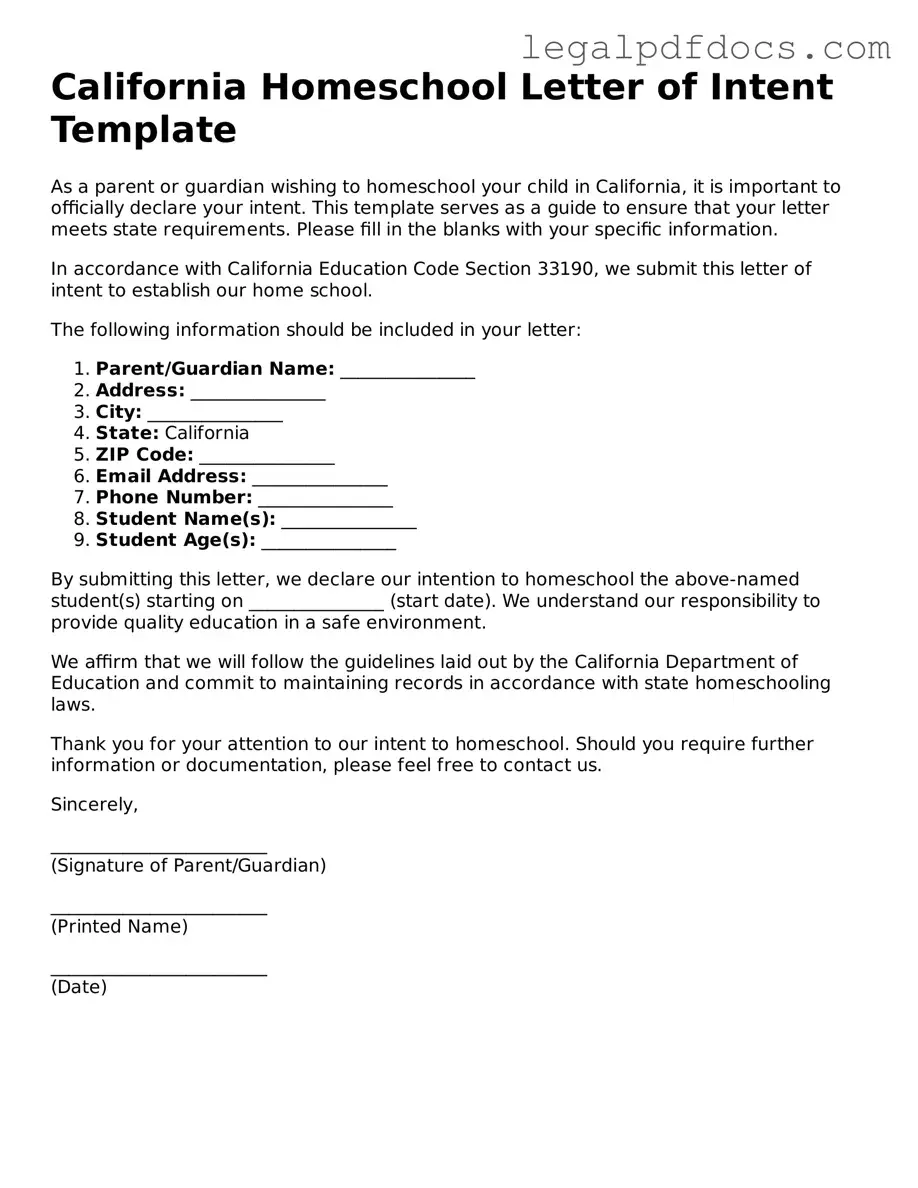Official Homeschool Letter of Intent Form for California
The California Homeschool Letter of Intent form is a crucial document that parents must submit to officially notify the state of their decision to homeschool their children. This form outlines the family's intent to provide an education outside of the traditional school system, ensuring compliance with state regulations. Understanding its requirements is essential for a smooth homeschooling experience; fill out the form by clicking the button below.
Open Homeschool Letter of Intent Editor Here
